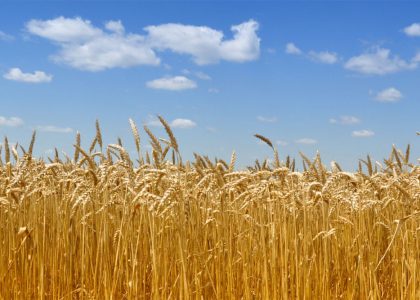We live in an age of endless information. This presents a huge and still growing problem for fundamental traders who base their market decisions upon the calculated variables involved in the markets they trade. When I started trading nearly 30 years ago, good information was still the key. It was hard to find and sources were treasured trade secrets. Today, there is so much news and so many data points that it is virtually impossible to really have a grasp and proper weighting of the issues affecting any given market. This becomes increasingly difficult with each additional market traded in this manner. This week, we'll track the 2016 soybean crop from pre-planting jitters, through the summer rally and subsequent decline before ending with our idea of harvest prices.
The grain markets are fantastic to trade on fundamental information because there are so many data sources and the factors at play are fairly easy to quantify. The USDA tracks acreage and crop condition to develop total production projections. This data is then combined with the grains still in the bins. Together, they equal total supply. Once global expected demand is subtracted from the total supply, we get the stocks to usage ratio. The stocks to usage ratio tells us how tight the situation is or, isn't.
The stocks to usage ratio sets the stage for the coming year's planting. Moving to the first chart, you'll notice that from last harvest through mid-March, the soybean market was fairly quiet. This is the first of the three phases typically exhibited in a soybean year. With little new information upon which to base their trades, commercial long and short hedgers provide support and resistance to the market's sideways meanderings. Both the long and short hedgers are drawn to the market as prices move below and above their respective assumptions of value. Long hedgers step in as prices decline and they can buy future inputs at lower costs to increase their margin. Conversely, short hedging is the collective endeavor of the farmers determining when to lock in the future delivery price for their crops. Both sides concurred that $8.75 represented pretty fair value and neutral pricing.

Notice that the blue sections are periods dominated by commercial buying momentum. Also, note that once the market really started to rally in May, above $9.25 that commercial short hedger selling intensified as indicated in red. Commercial short hedging peaked at more than 208k contracts in July. That equals a little over 1 billion bushels worth of forward hedging or, approximately 25% of the USDA's forecast production in the August WASDE report. We find it no coincidence that we ended up right back where we started as we stated early this June in, "Overpriced Soybeans Attract Significant Selling."

The second chart includes the actual trading signals that go along with this methodology. One of the main points is that there's so much data available that its analysis could go on in perpetuity. Furthermore, knowing the data doesn't guarantee the market reaction you were looking for. Ever hit the unemployment number on the button only to have the market move in the exact opposite way you'd have thought? The point being it's far more important to market direction right than data points.
Let's move to the current situation. Commercial long hedgers had returned to the buy side on the predicted July slide. However, recent reports (remember the data?) are now suggesting record yields on enough acreage to set an all-time production record according to the University of Illinois. Here's where the data gets murky. Note that the chart pulled from their August 12th report shows the average deviation of yield. This means that while many acres are over producing, some are underproducing. This could lead to spotty measurement or and unexpected final supply number based on finishing issues.

Which brings us back to the collective sentiment of the commercial traders as our first screen in the trading process. Final production numbers aren't our real concern. our real concern is profitability. To that end, if we can employ the collective wisdom of the world's top suppliers and users along the way, so much the better. We realize we're minnows swimming with sharks. Therefore, our idea is to swim along behind them and pick up the scraps. The last chart includes the actual buy and sell signals developed from this methodology over the last year's worth of trading. We think there's more to this downside as commercial buying appears to be drying up. This is a clear indication that soybean processors will have the upper hand into harvest.





